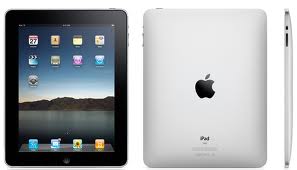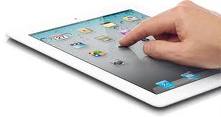Isn’t it something when a CEO of a company resigns and the entire world takes notice? When Steve Jobs unexpectedly resigned this week, it pretty much rocked a large sub-culture of our population. My first reaction when someone read the headline to me was, “wow,” with the disbelief and wonder that I reserve for pretty major news. This wasn’t just any CEO stepping down, this was an icon of the past decade, at least. One who has completely changed the game in design, technology, and entertainment – pretty much pop culture as a whole. Jobs and Apple have also made an indelible impact on the digital signage industry – and, in turn, an impact on me – with their products and thinking. So, for today’s Friday 4-1-1, it’s only right to give it up to the man who is responsible for some of my children’s favorite vocabulary words (iPod, iPad, mac – seriously.)
- The mac mini – when I was creating the Intellibooth software, one of our challenges was also finding the most appropriate hardware. We ended up using mac minis to house and run the software, primarily due to its small footprint. We could work it into any fabricated structure pretty easily and beyond that, could ship many of them in an efficient manner. In addition, we could load our Windows-based application onto it, plug all of our peripheries into it, and in a pinch, switch them in and out if anything went wrong. In short, this one little box enabled us to focus on what we really wanted to focus on – creating the front-end experience – so we could make a business of that instead of messing with the hardware game.

- The iPhone – in early iterations, the phone was more of a novelty than anything else. Yes, it was powerful, but no one really knew how to unlock the potential, both from a developer’s standpoint and a user’s standpoint. The possibility of integrating digital signage communications with mobile phone communications would probably not be at the stage its at right now without the introduction of the iPhone. It did change the landscape of phones, but it also changed the landscape of “out-of-home” in a literal sense. Now, it’s possible to interact with the places and things around us – not to mention, physical screens outside of our homes – in (very) large part thanks to the iPhone.

- The iPad – did you hear about the restaurant that is now using iPads for their entire customer experience? Menus, out. Credit card machines, out. It’s all iPads. Here are the two major impacts that this device has on the digital signage industry, in my opinion – 1) the more people get used to using a “high technology” (and touchscreen) device like this, the more they’ll feel comfortable using other unique touchscreen devices and 2) the more people get comfortable operating on a non-tethered device, the more they’ll feel comfortable using a “foreign” device outside of their homes.

- iOS – perhaps the largest contributor to interactive Out-of-Home signage is Apple’s operating system that is founded on gestures like swipe, tap, and pinch to actually navigate through the experience. These gestures are commonplace with the “average” consumer today, thanks to iOS. This type of touch and gesture control – and the comfort level using your fingers to control something this way – is a foundational element to interactive signage. Apple has made it infinitely easier for the industry to work through any intimidation barriers that might be around.

“Uh-huh” – the brand is iconic. To build something like this is what all brands and executives hope for.
“Duh” – have you ever heard that old adage, “it’s simple to make something hard, but it’s hard to make something simple”? Well, that’s what Apple has done throughout the years. Part of their beauty is in their simplicity. The digital signage industry, particularly as it relates to interfaces and experiences, can take many things from Apple. When it’s simple to use, it’s enjoyable. And joy has to be present for any positive experience. Thank you, Steve.









